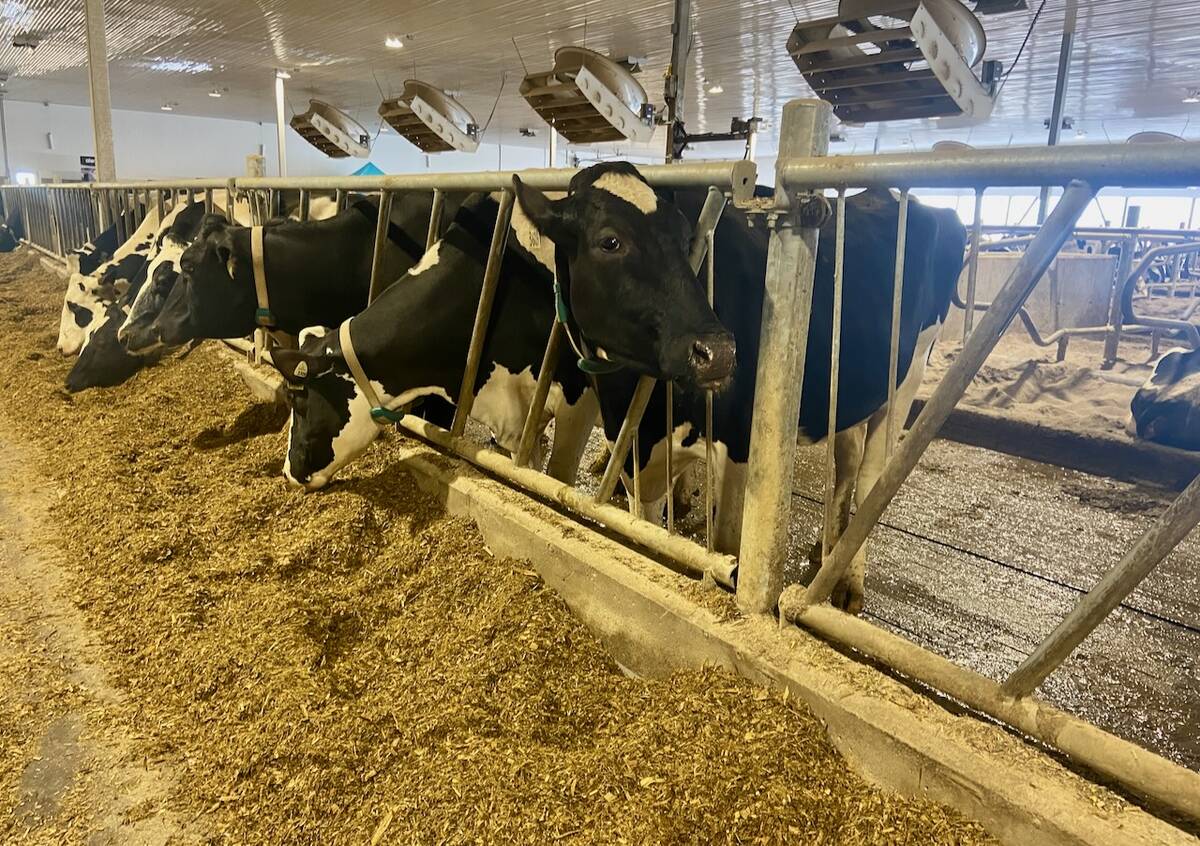Lorne Edmondson figures the middle of the road isn’t a bad place to be, at least when it comes to raising cattle.
Just shy of 50 years in the Shorthorn business, Edmondson says the best advice he ever got was not to stray from the centre line.
“When I started in ’48 they were the kind of cattle they always should be,” the Oakville, Man. producer said at Agribition, where he showed two heifer calves in his first appearance at the show.
“They went to the small blocky type and to the tall, narrow meatless kind. Now they’re going back to the thicker, easier to keep cattle. I always said if we followed the commercial man we’d be better off.”
Read Also

U.S. farm group supports supply management
U.S. grassroots farm advocacy group pushing new agriculture legislation that would move towards supply management like Canada has for dairy industry
Edmondson, past president of the Canadian Shorthorn Association, said breeders have to promote the Shorthorn advantages – better milking, quiet disposition, easy fleshing and good marbling.
“Our market is the commercial. We’ve got to get the commercial man to realize what we have,” he said.
“One thing the Shorthorn breed is really noted for is it doesn’t matter what you cross it with, you get one of the better calves. The last three years, Shorthorn females, as soon as they’re advertised, they’re gone.”
Yet the breed is no longer one of the most popular in Canada.
“Younger people don’t know the word Shorthorn much,” Edmondson admitted. “When the exotics came in they all wanted to try the new thing.”
Gary Robinson, of Winsloe, P.E.I., is the current association president. He agrees more people need to see the benefits of a traditional breed.
Shorthorns are low on the list in registration numbers, although they have been holding steady. The association itself has between 400 and 500 adult members, he said.
“Forty years ago it was probably the number one breed,” Robinson said. “We’re a long ways from what we were then.”
He said numbers aren’t sufficient to generate the publicity gained by better-known breeds like Angus and Hereford.
“We can’t do the same volume of promotion or the same volume of anything,” he said. “It’s hard to produce growth.”
Robinson said slow reaction to industry demands may have hindered the breed.
“We were probably a little slower to change and get away from fatter brisket, heavy cattle,” he said. “People still think of Shorthorns as little fat cattle. It’s a battle we’ve been fighting to change for a long time.”
He also noted Shorthorns have made “major gains” in the United States and Australia, which aren’t being seen in Canada.
Tests done in a 16,000-steer Australian feedlot found Shorthorn crosses and purebreds at the top of “marbling, daily gain, the whole bit. We can’t get that kind of test in Canada,” he said.
In a recent issue of Shorthorn News, Robinson called on the membership to take charge and make changes.
“I feel at times that while we have a sound ship, we do not have a captain, let alone someone setting the course,” he said in the article.
Robinson said, as a president who works full-time off the farm, he isn’t that captain. He said the association needs an executive director or “a little more than a person in the office answering phones and doing bookkeeping” and a stronger western presence.
The Shorthorn office is the only beef breed office left in Guelph, Ont.















